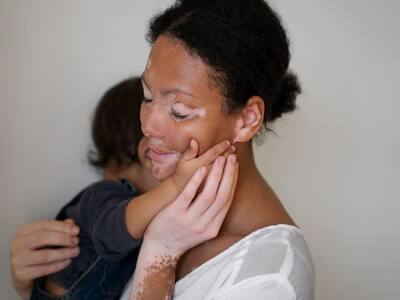
Vitiligo is more than just a skin disease. It can be detrimental to patients’ emotional health, and impact their self-esteem, body image, and quality of life.
When we say vitiligo, the first thing that may come into your mind is skin white spots. But Vitiligo is more than just a skin disease. This skin condition has been found to be associated with several other disorders, such as ocular or otologic diseases, autoimmune disease, metabolic syndrome (MetS) and psychological diseases. Vitiligo is beyond skin deep, and it can be detrimental to patients’ emotional health. People with vitiligo face social stigmatization, and they are vulnerable to developing mental stress and low self-esteem. Let’s explore the emotional and psychological impact of vitiligo.
Causes of Vitiligo
Dr Anil KV Minz, Sr Consultant – Dermatology at Marengo Asia Hospitals, Faridabad NCR, explains, “Vitiligo is a long-term skin condition characterized by the loss of melanocytes, the cells responsible for producing the pigment melanin. As a result, affected areas of the skin and sometimes hair turn white or depigmented, and other body parts including the face, hands, feet, arms, and genital area. It can develop at any age and affects 1-2 per cent of people globally. The exact cause of vitiligo remains unclear; however, a combination of factors including genetic, autoimmune, and environmental is believed to be involved.
Vitiligoaffects beyond skin
Sharing her emotional struggles as a vitiligo patient, Seema says, “Vitiligo is a social taboo because society is living with a misconception that it can spread. While growing up I was called a ghost not only by the people but also by my friends with whom I used to play. I had lost my self-esteem and urge to live. But now I love my two skins. Earlier, I used to hide the white spots with makeup, but I have learned to live with it. With some lifestyle changes and medications, it has slowed down to spread.”
READ RELATED: These Three Key Nutrients Are Essential For Heart Health
Management of Vitiligo
Dr Minz notes that while medications have shown some efficacy in reducing the symptoms of vitiligo, the depigmented skin patches may reappear after discontinuing the medication.
“In addition to medical interventions, certain lifestyle changes, including dietary modifications and regular exercise, have been suggested to potentially slow down the spread of vitiligo. These lifestyle adjustments can complement medical treatments and contribute to a holistic approach to managing the condition,” he adds.
Comorbidities associated with vitiligo
Vitiligo is characterized by skin white spots, resulting from epidermal melanocyte damage. However, melanin and melanocytes are also present in other parts of the body including the eyes, cochlea, leptomeninges, and the heart. Melanocyte damage at these locations can lead to serious health complications. Here are some of the comorbidities associated with vitiligo:
- Ocular abnormalities (Dry eyes, Uveitis, Glaucoma, Vogt-Koyanagi-Harada Syndrome)
- Psychological diseases (Anxiety, Depression, Stigmatization, Sleep disturbance)
- Auditory abnormalities (sensorineural hearing loss)
- Autoimmune diseases (thyroid disease, rheumatoid arthritis, inflammatory bowel disease (IBD), systemic lupus erythematosus, and type 1 diabetes mellitus)
- Endocrinological diseases (Thyroid disorders, Addison’s disease).
Total Wellness is now just a click away.
Follow us on
window.addEventListener(‘load’, (event) => {
$(‘#commentbtn’).on(“click”,function(){
(function(d, s, id) { var js, fjs = d.getElementsByTagName(s)[0]; if (d.getElementById(id)) return; js = d.createElement(s); js.id = id; js.src = “//connect.facebook.net/en_US/sdk.js#xfbml=1&version=v2.3”; fjs.parentNode.insertBefore(js, fjs);}(document, ‘script’, ‘facebook-jssdk’));
$(“.cmntbox”).toggle();
});
});








